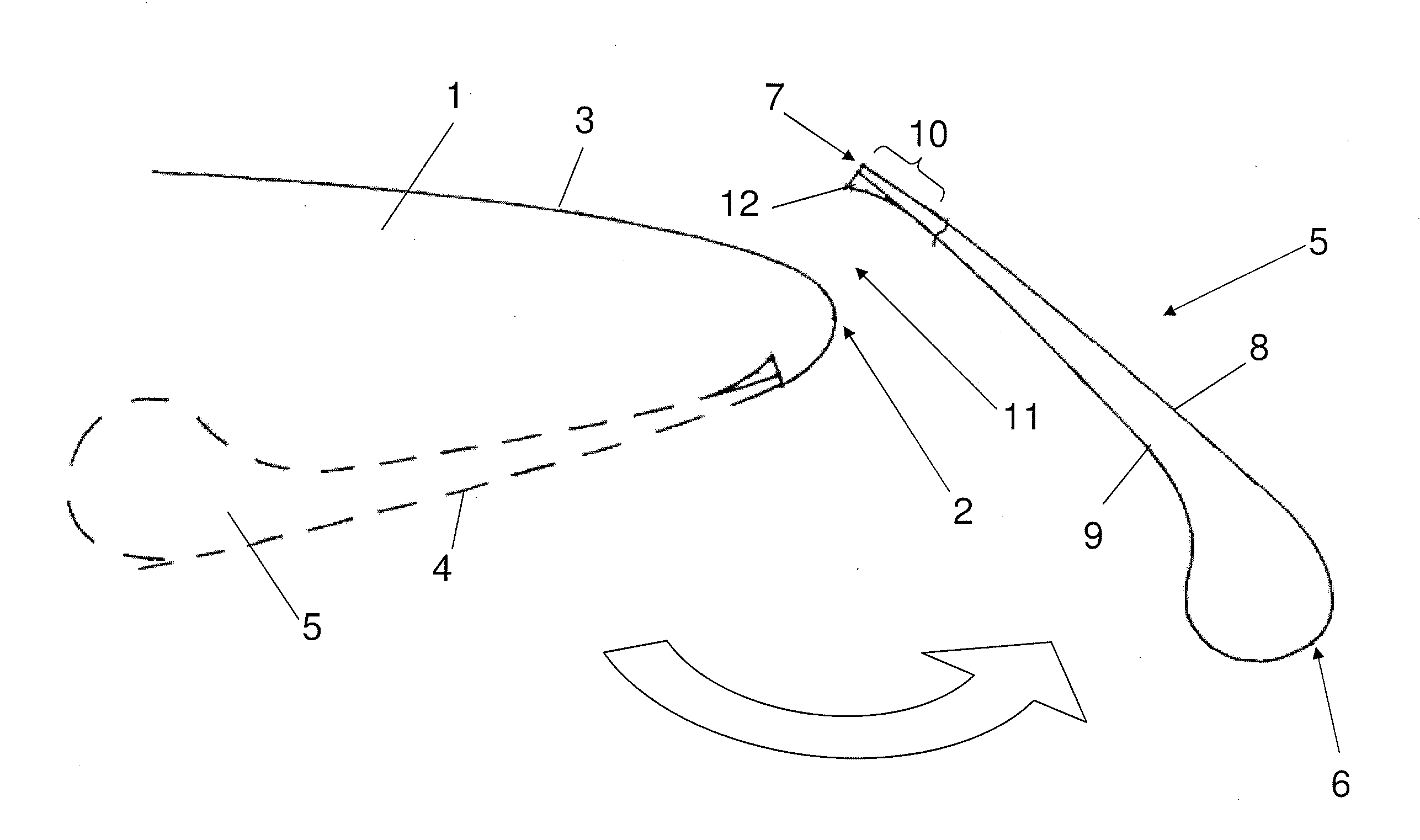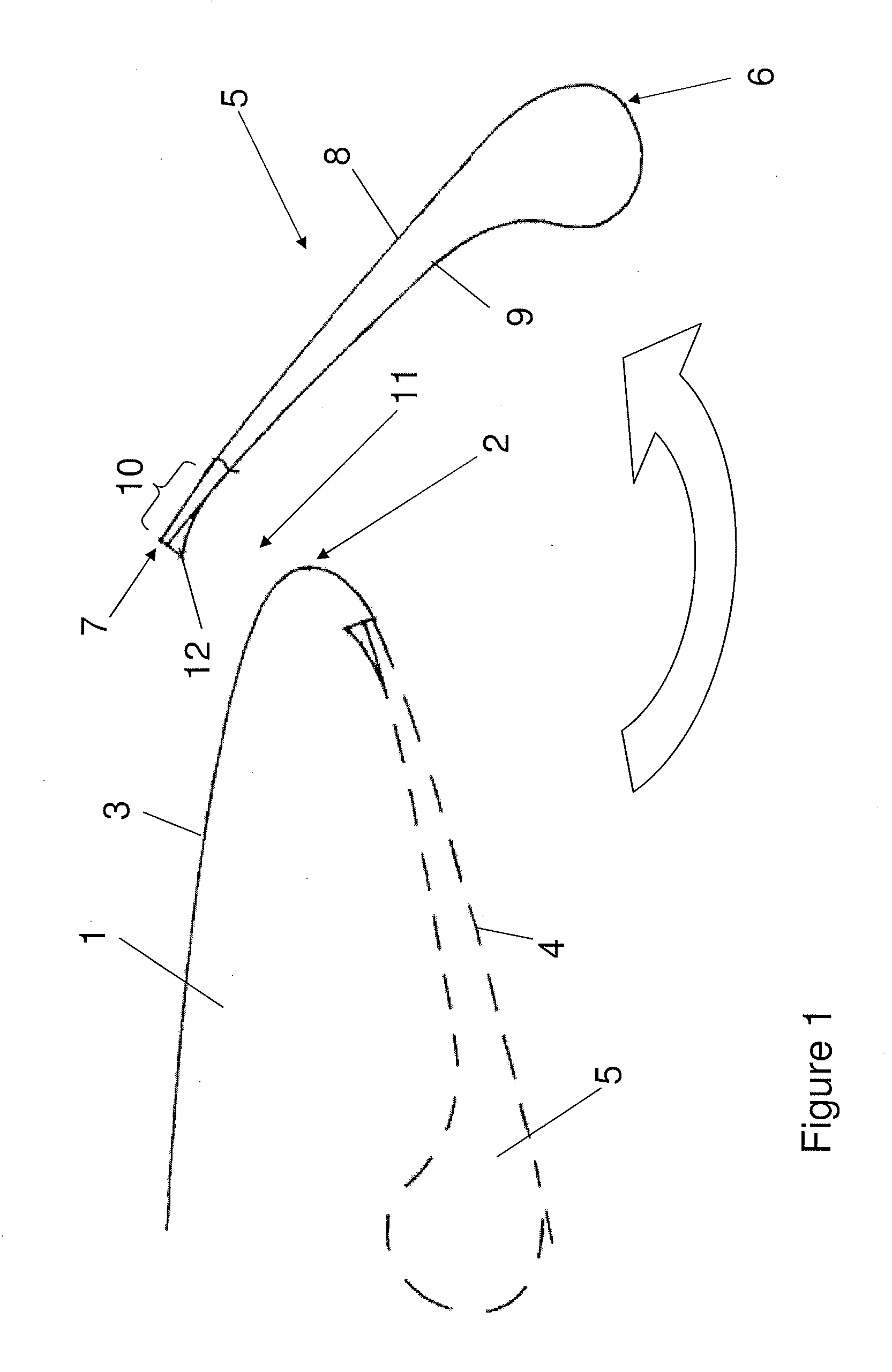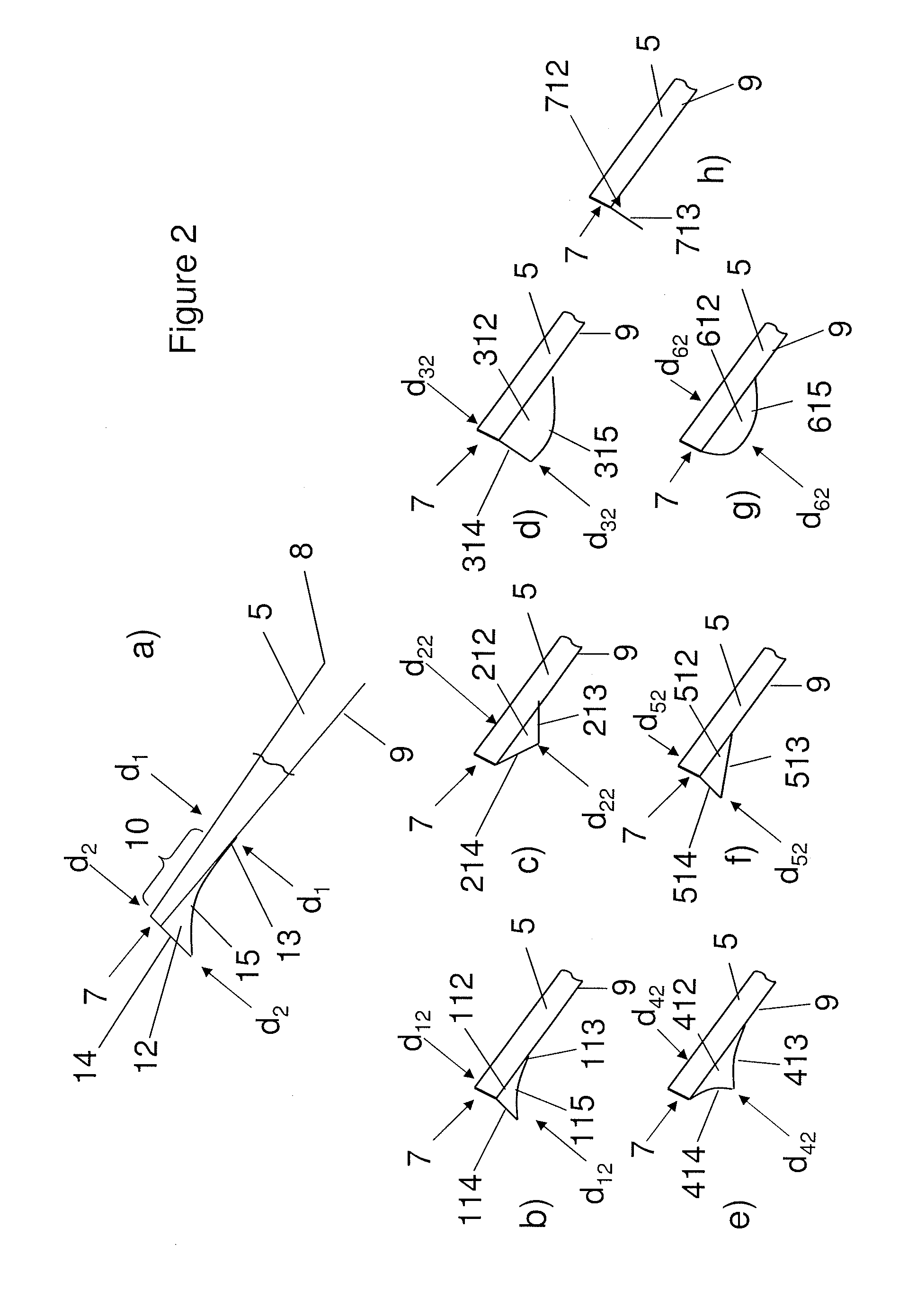Krueger
a krueger and krueger technology, applied in the field of krueger, can solve the problems of reducing the circulation around the high-lift device, limiting the positioning of the deployed device, and creating a convergent-divergent slot, so as to reduce or eliminate the effect of divergen
- Summary
- Abstract
- Description
- Claims
- Application Information
AI Technical Summary
Benefits of technology
Problems solved by technology
Method used
Image
Examples
Embodiment Construction
)
[0026]FIG. 1 illustrates an aircraft wing comprising a main (“fixed”) wing element 1 having a leading edge 2, an upper aerodynamic surface 3, and a lower aerodynamic surface 4. The upper and lower aerodynamic surfaces 3, 4 meet at the leading edge 2. A Krueger 5 is mounted to the main wing element 1 for movement between a retracted position (shown in broken line) and a deployed position (shown in full line). The leading edge Krueger 5 is a high-lift device deployed at low speed and high incidence to increase the camber and maximum lift coefficient of the wing. The Krueger is movable between its deployed and retracted positions by a Krueger actuation mechanism, which has been omitted from FIG. 1 for clarity.
[0027]The deployed Krueger 5 has a leading edge 6, a trailing edge 7, an upper aerodynamic surface 8 and a lower aerodynamic surface 9. The upper and lower aerodynamic surfaces 8, 9 meet at the leading and trailing edges 6, 7. A region of the Krueger adjacent the trailing edge 7 ...
PUM
 Login to View More
Login to View More Abstract
Description
Claims
Application Information
 Login to View More
Login to View More - R&D
- Intellectual Property
- Life Sciences
- Materials
- Tech Scout
- Unparalleled Data Quality
- Higher Quality Content
- 60% Fewer Hallucinations
Browse by: Latest US Patents, China's latest patents, Technical Efficacy Thesaurus, Application Domain, Technology Topic, Popular Technical Reports.
© 2025 PatSnap. All rights reserved.Legal|Privacy policy|Modern Slavery Act Transparency Statement|Sitemap|About US| Contact US: help@patsnap.com



